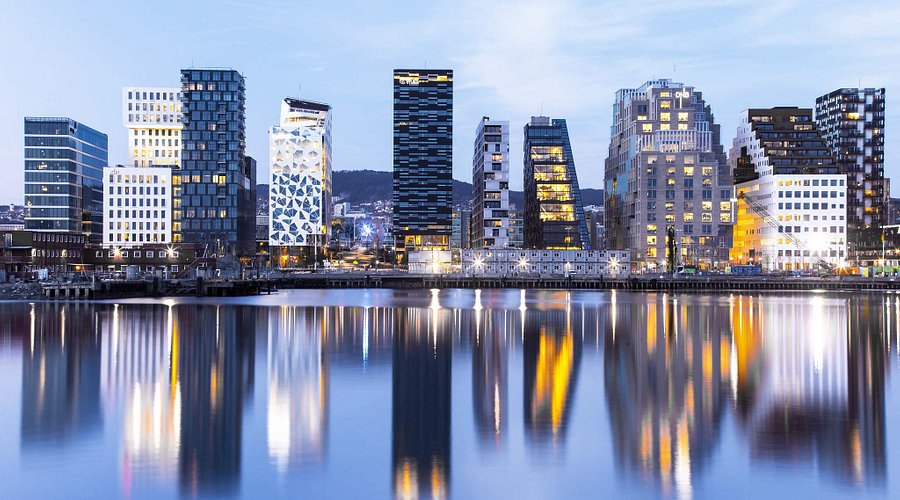In 2023, Oslo stands out as the world’s leading electric car capital, a title that might surprise many given Norway’s relatively small size. Yet, this Nordic city boasts a remarkable statistic: over 80% of new car sales are electric vehicles (EVs) as per the Norwegian Road Federation. This impressive feat didn’t happen overnight but is the result of strategic planning, robust policy-making, and a strong commitment to sustainable living. In this article, you’ll discover the unique steps Oslo took to accelerate its electric vehicle adoption, the infrastructure supporting this transition, and how other cities can draw inspiration from Oslo’s success.
The Rise of Oslo as an Electric Vehicle Hub
Strategic Government Policies
Oslo’s journey to becoming an electric vehicle hub can be largely attributed to forward-thinking government policies. Since the 1990s, Norway has been at the forefront of promoting EVs, but it was in the past decade that Oslo ramped up its efforts:
- Tax Incentives: Electric vehicles in Norway are exempt from the 25% VAT and other purchase taxes, making them significantly cheaper than their gasoline counterparts.
- Subsidies and Grants: The government offers substantial subsidies, up to €5,000 per vehicle, to encourage EV adoption.
- Access and Privileges: EVs enjoy perks such as free parking, toll exemptions, and access to bus lanes, easing the daily commute for many Oslo residents.
These incentives have made electric cars an economically viable choice, aligning financial interests with environmental responsibility.
Robust Charging Infrastructure
The backbone of any electric vehicle capital is its charging infrastructure, and Oslo excels in this area:
- Charging Stations: With over 3,000 public charging points, Oslo ensures that EV drivers are never far from a recharge. According to Bloomberg Green, this network is one of the most extensive per capita worldwide.
- Fast Chargers: Approximately 40% of these are fast chargers, which can replenish an EV battery to 80% in under 30 minutes, minimizing downtime for users.
- Innovative Solutions: Oslo is also experimenting with wireless charging for taxis and electric buses, a project reported by TechCrunch to be among the first of its kind globally.
By prioritizing infrastructure, Oslo has not only supported existing EV users but also attracted new ones, confident in the ease of charging.
Community Engagement and Cultural Shifts
Public Education and Advocacy
Oslo’s shift towards electric vehicles is not just a top-down initiative; it involves grassroots efforts and community engagement:
- Public Awareness Campaigns: The city runs extensive educational campaigns about the benefits of EVs, including environmental benefits and cost savings.
- EV Experience Programs: Programs that allow residents to test-drive electric vehicles have demystified EV technology and assuaged range anxiety.
- School Initiatives: Educational programs in schools focus on sustainability, ensuring that the next generation values and understands the importance of electric mobility.
Cultural Acceptance
The cultural shift towards electric vehicles in Oslo has been profound. As reported by InsideEVs, the majority of Oslo residents now view electric cars as the norm rather than the exception. This cultural acceptance has been pivotal in driving the city’s EV revolution.
Practical Guide: Transitioning to Electric Vehicles
Tips for Prospective EV Buyers
If you’re considering joining the electric revolution, here are some tips inspired by Oslo’s success:
- Research Incentives: Look into local and national incentives available for EV buyers. These can significantly reduce the upfront cost.
- Evaluate Charging Needs: Assess your daily commute and ensure you have access to convenient charging options, whether at home or work.
- Test Drive: Experience the difference by test-driving various models to find one that suits your lifestyle.
Charging Your EV in Oslo
Charging in Oslo is seamless due to its extensive network. Here’s how you can make the most of it:
- Use Apps: Several apps help locate nearby charging stations and indicate availability in real-time.
- Home Charging: Consider installing a home charging unit for overnight charging, which is both convenient and cost-effective.
What to Compare When Buying an EV
When purchasing an EV, consider:
- Range: Choose a model with a range that meets your daily needs.
- Charging Speed: Faster charging capabilities can be a significant advantage.
- Total Cost of Ownership: Factor in maintenance costs, which are generally lower for EVs compared to traditional vehicles.
Conclusion: Oslo’s Legacy and Lessons for the Future
Oslo’s transformation into the world’s electric car capital offers invaluable lessons for cities worldwide. Its success underscores the power of aligned policies, robust infrastructure, and community involvement. As the world moves towards a more sustainable future, Oslo sets a benchmark that others can aspire to.
Will your city be next to follow in Oslo’s footsteps? By adopting comprehensive strategies and fostering cultural shifts, any city can accelerate its journey towards sustainable mobility. The future of urban transportation is electric, and Oslo is leading the charge.
Join the conversation: What strategies do you think your city should implement to encourage electric vehicle adoption? Share your thoughts and let’s accelerate towards a greener future together!
By creating a compelling narrative around Oslo’s achievements and embedding practical advice for readers, this article not only informs but also inspires action—making it both informative and highly shareable.

